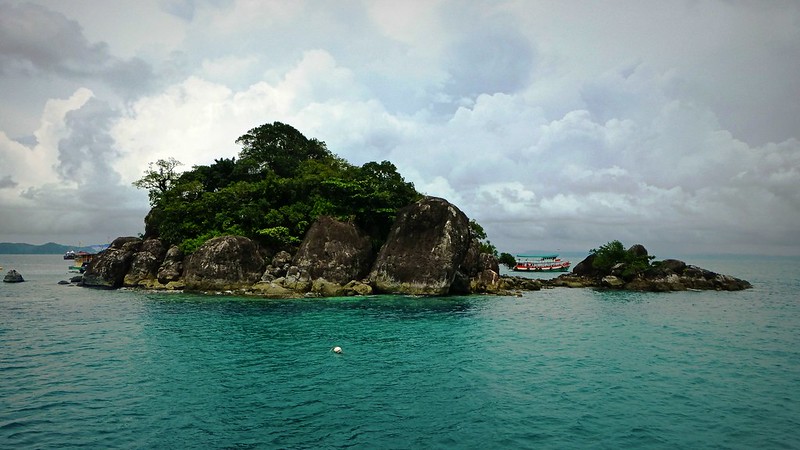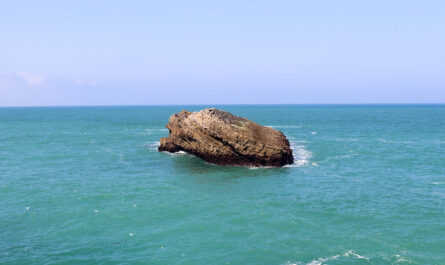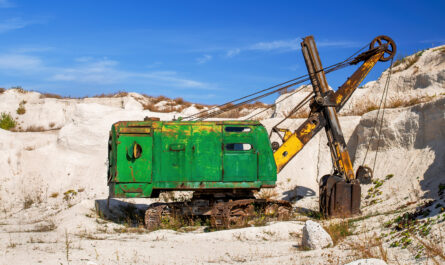New Britain, an island in Papua New Guinea’s Bismarck Archipelago, is home to some of the most active and impressive volcanoes in the Pacific Ring of Fire. This volcanic arc is part of the tectonically active region that encircles the Pacific Ocean, where numerous volcanic eruptions and seismic activities occur due to the movements of tectonic plates. New Britain’s volcanoes, while dangerous, offer breathtaking displays of natural power and are vital to the island’s landscape, culture, and history.
The island is marked by two volcanic arcs: the Rabaul Volcanic Complex in the north and the Ulawun-Kadangma Group in the west, which host some of the most powerful and active volcanoes in the world. This article delves into the geological, cultural, and environmental significance of New Britain’s volcanoes, offering a comprehensive look at these natural wonders.
1. The Rabaul Volcanic Complex: A Volcanic Haven
One of the most famous volcanic regions in New Britain is the Rabaul Volcanic Complex, located near the northeastern tip of the island. The town of Rabaul, once a bustling trading hub, was partially destroyed during the devastating eruptions of Mount Tavurvur and Mount Vulcan in 1994.
Mount Tavurvur
Mount Tavurvur is arguably the most iconic volcano on New Britain. It is an active stratovolcano that has erupted numerous times throughout history, with one of its most significant events occurring in 1937, when it erupted alongside Mount Vulcan, killing hundreds and severely damaging Rabaul.
The 1994 eruption, which saw both Tavurvur and Vulcan erupt simultaneously, led to the evacuation of Rabaul and the relocation of much of the town’s population. The eruption blanketed the town in ash, destroyed buildings, and reshaped the landscape, but it also transformed the region into a unique destination for adventurers and volcanologists. Tavurvur remains active, and smaller eruptions continue to occur, creating ash plumes that tower into the sky.
Visitors to the area can hike to the base of Tavurvur to witness its power firsthand. Though the volcano is closely monitored for safety, it offers an up-close look at the raw energy of an active volcano. From the nearby Rabaul Volcano Observatory, tourists can watch the volcano’s activity and take in panoramic views of the caldera.
Mount Vulcan
Mount Vulcan, located adjacent to Tavurvur, was once dormant but has experienced several explosive eruptions over the past century. Its eruption in 1937, alongside Tavurvur, was one of the deadliest in the island’s history. Unlike Tavurvur, which continues to erupt, Vulcan has remained relatively quiet since the 1994 event, although it is still considered an active volcano.
Together, Tavurvur and Vulcan sit within a large caldera that forms the Simpson Harbour, one of the most beautiful natural harbors in the world. The caldera’s circular shape is a result of past volcanic collapses, and it serves as a reminder of the immense power that created it.
2. Ulawun Volcano: The “Father” of Volcanoes
Mount Ulawun, located in the western part of New Britain, is one of the most active and tallest volcanoes in Papua New Guinea. Standing at over 2,334 meters (7,657 feet), it is often referred to as the “Father” of volcanoes due to its imposing presence and frequent eruptions. Ulawun has erupted more than 20 times since the 18th century, with some eruptions reaching significant levels of explosivity.
Ulawun is a stratovolcano, characterized by steep slopes formed by layers of hardened lava, tephra, and volcanic ash. The volcano’s eruptions often produce pyroclastic flows, which are fast-moving currents of hot gas and volcanic matter. In recent years, Ulawun’s eruptions have caused widespread evacuations, although the remote location of the volcano minimizes the risk to human populations.
For adventurous travelers, Ulawun offers a challenging climb, but the hike is not for the faint-hearted. The ascent is steep and strenuous, and the volatile nature of the volcano means that climbers must pay close attention to safety alerts and local guides. However, those who make it to the top are rewarded with breathtaking views of New Britain’s rainforests and coastlines, as well as the surreal sight of Ulawun’s crater.
3. Environmental Impact of Volcanic Activity
The volcanoes of New Britain have had a profound impact on the island’s environment. The eruptions have created fertile soils that support the island’s lush rainforests and agricultural activities. The ash deposited from eruptions, while initially destructive, eventually enriches the soil with nutrients, allowing for vibrant plant growth.
The island’s coral reefs, however, are often impacted by volcanic ash and lava flows. For example, the 1994 eruption of Tavurvur released ash into the sea, which damaged parts of the coral ecosystem around Rabaul. Despite these challenges, the reefs around New Britain are resilient, and the region remains a popular destination for diving and snorkeling.
The constant volcanic activity also influences New Britain’s weather patterns. The towering ash clouds produced by eruptions can impact air quality and create microclimates in the surrounding areas, contributing to frequent rainfall and shifting wind patterns.
4. Cultural Significance of New Britain’s Volcanoes
The volcanoes of New Britain are not just geological features—they are deeply intertwined with the cultural beliefs and traditions of the island’s indigenous peoples. The Tolai people, who live near Rabaul, have long held the volcanoes in reverence, believing them to be the dwelling places of powerful spirits. Traditional ceremonies and rituals are performed to honor these spirits, especially during times of volcanic unrest.
The volcanic landscape has also shaped the way of life on New Britain, with many communities adopting practices to live in harmony with their volatile surroundings. Buildings in Rabaul, for example, are constructed with the understanding that they may one day need to be abandoned or rebuilt due to volcanic activity.
The local government, in conjunction with the Rabaul Volcano Observatory, has implemented evacuation plans and early warning systems to protect residents from future eruptions. These systems have been critical in preventing widespread casualties during major eruptions.
5. Visiting New Britain’s Volcanoes: What to Expect
For travelers seeking a unique adventure, New Britain offers an unforgettable experience. The island’s volcanoes provide opportunities for hiking, photography, and cultural exploration. The Rabaul Volcanological Observatory, located on the slopes of Mount Tovanumbatir, is a great starting point for visitors wanting to learn more about the island’s volcanic activity.
Guided tours are available for those looking to explore Tavurvur’s volcanic craters, while more daring travelers can arrange expeditions to climb Ulawun. The landscape around the volcanoes is dotted with hot springs, mud pools, and fumaroles, adding to the surreal beauty of the region.
When visiting active volcanoes, safety is paramount. It is essential to heed the advice of local guides and follow any evacuation orders in case of increased volcanic activity. While the risk of eruptions is always present, the island’s monitoring systems and early warnings help ensure that visitors can safely witness nature’s spectacular displays.
Conclusion: A World of Volcanic Wonders
The volcanoes of New Britain stand as a testament to the raw power of nature. From the active craters of Mount Tavurvur and Mount Vulcan to the towering presence of Mount Ulawun, these natural wonders offer both danger and beauty in equal measure. For travelers and scientists alike, New Britain provides a unique opportunity to witness volcanic activity firsthand, explore lush landscapes shaped by volcanic forces, and immerse oneself in the cultural heritage that has evolved alongside these powerful forces of nature.
Whether you are hiking through volcanic craters, observing eruptions from a distance, or learning about the island’s history at the Rabaul Volcano Observatory, New Britain’s volcanoes offer an adventure like no other—a spectacular display of nature’s might and beauty.



